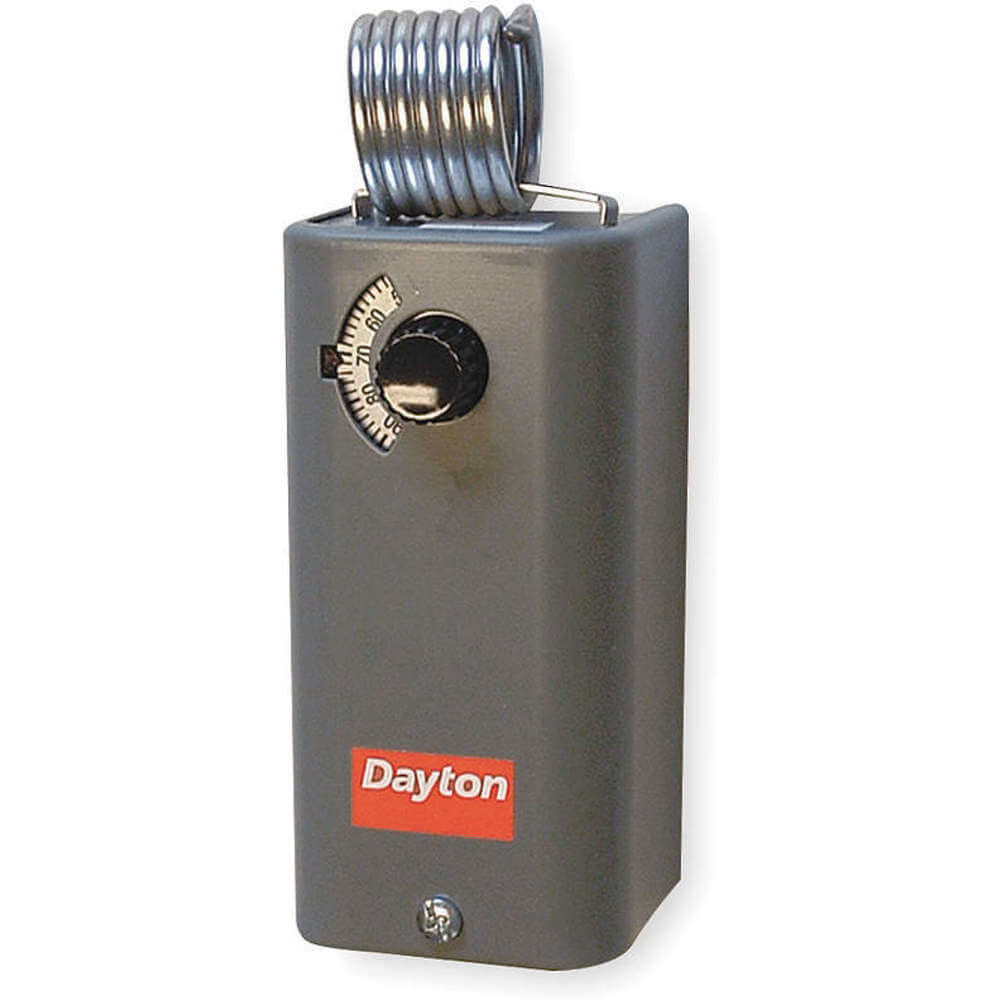Dayton 1UHH3 line voltage control is used in heating and cooling systems to regulate temperature by controlling line voltage for energy efficiency and to prevent extreme temperature conditions. This Dayton line volt mechanical Tstat is suitable for maintaining desired temperature levels in offices and industrial settings.
Working Mechanism:
- The mechanical thermostat incorporates a temperature-sensing component, often utilising a bimetallic strip. As temperature changes occur in the controlled area, the bimetallic strip reacts by flexing due to the distinct expansion rates of its constituent metals.
- The movement of the bimetallic strip is linked to a set of contacts. When the strip flexes due to temperature shifts, it leads to the opening or closing of the contacts.
- The act of opening or closing the contacts manages the flow of line voltage to the connected heating or cooling system. If the contacts close, the circuit is established, allowing electric current to flow and activate the system. Conversely, if they open, the circuit is interrupted, deactivating the system.
- As the temperature nears the desired setting, the bimetallic strip returns to its initial state, causing the contacts to return to their previous position. This sequence sustains the temperature within the desired range.
Frequently Asked Questions:
Q. What is the difference between line voltage and low voltage thermostats?
A. The distinction between line voltage and low voltage thermostats lies in their voltage ranges. A line voltage thermostat operates within the range of 120 to 240 volts. It consumes more power compared to low-voltage thermostats as it directly supplies power to the heater. Line voltage thermostats are typically associated with radiant, convection, or resistance heating systems. If your setup involves baseboard or wall heaters, it is likely that you are using a line voltage thermostat. In contrast, low-voltage thermostats utilise lower voltage levels and are commonly found in systems like central heating and cooling setups.
Q. What is the operating temperature of Dayton line volt mechanical Tstat?
A. It has an operating temperature ranging from 30 to 110 degrees F.
Q. How to install Dayton 1UHH3 line voltage control?
A.
- Secure a wire nut onto the ground and white wires.
- Connect one hot wire using a wire nut to bypass the thermostat.
- Attach the black wire for both lines and load to the thermostat.
- Gently push the green, white, and red wires into the electrical box.
- Align the screws on the box accordingly. Proceed to fasten the thermostat onto the box by screwing it in place. Finally, replace the faceplate of the thermostat.
Q. Which wires power a Dayton line volt mechanical Tstat?
A. The power source for a thermostat is typically provided by the Rc and Rh wires. If your thermostat is solely for air conditioning, it will have a red Rc wire. For heating and cooling systems, there will be both red Rc and red Rh wires. Despite both being red, these wires serve different purposes and cannot be swapped interchangeably.
 Change Country
Change Country

